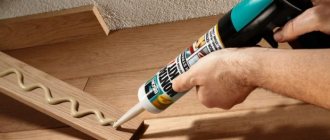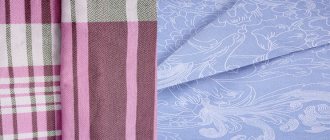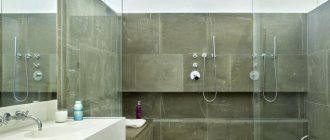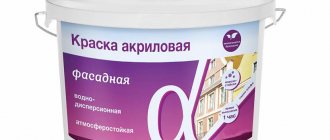History of cement
The word “cement” comes from the Latin caementum, which translates as “crushed, broken stone.” This substance was the result of a search for ways to cope with the low water resistance of gypsum and limestone rocks. For this purpose, water-resistant mineral substances were introduced into their composition. At the very beginning, they were the remains of baked clay bricks and volcanic rocks. The ancient Romans used ash deposits from the famous volcano Vesuvius - pozzolans.
The optimal cement production technology was developed many years later, when the need for large quantities of inexpensive and durable binder did not become most acute. The greatest contribution to the research was made by:
- Mason John Aspind, who received a patent for Portland cement in 1824.
- Russian builder Egor Cheliev, who wrote a book about cement for underwater work in 1825.
The name Portland cement comes from the English island of Portland, which consists of limestone rocks. In England, stones from this island were considered the most prestigious building material. Aspind managed to obtain an artificial stone, which in strength and color was very similar to the specified material.
But it was made without firing the raw materials. Greater compliance of the technology with what is Portland cement today is noted precisely in the Cheliev production process.
Types of binders
Clay was used to join the stones from which prehistoric buildings were built. But such a binder did not lend itself to firing technology, so most of the premises were destroyed under the influence of erosion, age and other factors. The only houses that have survived to this day were treated with lime mortar.
Many hundreds of years ago, people came to the conclusion that burnt and crushed calcium oxide, better known as limestone, upon contact with water begins to harden, absorbing gas from the air, and then becomes stone. The disadvantages of this material include low resistance to moisture, so this option may only be relevant in the production of sand-lime bricks.
There is another type of binder raw material that can achieve high strength properties when exposed to air - gypsum. It is produced by heat treatment and subsequent grinding of natural gypsum stone (CaSO 4−2 H 2) or anhydride CaSCu.
Gypsum compositions have a rich history of use and have not lost their popularity to this day. The most striking examples of the use of such material are luxurious stucco moldings and decorations that have been well preserved to this day.
As for airborne substances, they can only be used where buildings are not at risk of increased moisture.
Otherwise, it is necessary to add water-repellent additives to the composition or arrange a waterproofing layer. Because of this disadvantage, builders prefer hydraulic cementitious mortars. These include compositions that create hydrate compounds that can gain strength in conditions of high humidity. At the same time, exposure to water does not in any way threaten such products and does not cause their deformation.
Mortars for the construction of waterproof buildings are created from hydraulic lime, which includes sedimentary calcareous rocks - marls, as well as Portland cement. The last component makes the final product monolithic, guaranteeing excellent strength properties. Lime options are relevant only for those operating conditions where there are no intense loads.
What is cement made from: composition and main raw materials
The composition of cement includes the following components:
- Lime (calcium oxide, CaO) – 60%.
- Silicon dioxide (SiO2) – 20%.
- Aluminum (alumina, Al2O3) – 4%.
- Gypsum and iron oxides (Fe2O3) – 2%.
- Magnesium oxide (MgO) – 1%.
The indicated percentage of the listed components is typical for the most popular type of cement - Portland cement. It may vary somewhat. It all depends on the production technology and class of cement products.
Important! The existence of different types and brands explains the lack of an exact chemical formula for cement. All important information is provided by indicators of mineralogical composition.
The main thing cement is made from is clinker. This is the name given to the product of firing the raw materials – limestone and clay, which are taken in a 3:1 ratio. Clinker is a semi-finished product for producing cement. After firing at temperatures up to 1500 °C, the clinker is crushed, as a result of which it is presented in the form of granules with a diameter of up to 60 mm.
During grinding, additives are added to the clinker composition:
- Gypsum (CaSO42H2O), which regulates setting times.
- Corrective additives (up to 15-20%), improving certain properties of cement: plasticizers, additives, etc.).
Different rocks are used as the main raw material for cement production:
- Carbonate type fossils. They can have an amorphous or crystalline structure, which determines how effectively the material will interact with other components in the composition when fired.
- Sedimentary origin. This is a clay raw material with a mineral base, which, when excessively moistened, becomes plastic and swells, i.e. increases in volume. The main feature of the material is its viscosity, which determines its use in the dry production process.
We advise you to study in more detail: “Everything you need to know about superplasticizers, or how to reduce cement consumption.”
Carbonate rocks
Among the carbonate rocks used for cement production are:
- Marly limestone, or marl. Contains clay impurities, therefore it is considered a transitional material between carbonate and clayey rocks.
- Chalk is a type of smearing limestone, which is characterized by ease of grinding.
- Shell rock. It is characterized by a porous structure, which is not very resistant to compressive loads.
- Dolomite rocks. Of all types of carbonate rocks, they have the most valuable physical properties.
Clay rocks
Clay rocks used in cement production include:
- Clay. The main type of clayey rock with mineral inclusions in its composition.
- Loam. It differs from clay in the increased concentration of dust particles and sand fraction.
- Loess. Less plastic rock. It is more characterized by porosity, friability and fine grain. Loess may contain inclusions of quartz or silicate.
- Shale. Of all types of similar rocks, it has the highest strength. When crushed, shale is converted into plate-like particles. The material contains little moisture and is characterized by a stable granulometric composition.
Corrective additives
For the purpose of adjustment, special mineral additives are introduced into the cement composition. First of all, these are modifiers based on fossils containing:
- iron,
- flint-belite
- fluorspar,
- apatite,
- alumina.
Also, corrective additives can be provided by industrial waste from other industries. They are used:
- pyrite cinders;
- dust from blast furnaces;
- belite sludge;
- mineralizers.
The use of additives makes it possible to improve the characteristics of cement and concrete mortar, which is prepared on its basis. Each of the modifiers gives the mixture special properties, for example:
- CemFrio – has anti-frost, plasticizing and accelerating effects.
- CemPlast - allows you to obtain a highly mobile concrete mixture with increased workability, as well as increase the activity of the binder, i.e. cement, and ensure complete hydration.
- CemAqua and CemAquaStop are waterproofing, water-reducing, water-repellent surface treatment products.
- CemBase – increases the strength, frost resistance, water resistance and durability of concrete products.
- Plastix is a multifunctional water-reducing and plasticizing additive that increases the grade strength of concrete products.
- CemFix is an accelerator additive used for concrete mixtures that require high early strength.
Carbonate rocks
The main representatives of the carbonate rock family are:
Chalk is a soft rock that easily crumbles and grinds into a dusty state. Cement may contain up to 20-25 percent chalk. This additive improves the adhesion of cement to sand during the preparation of the solution;
Marly limestone or marl is a transitional link between limestone and clayey rocks. In appearance, it is a layered or monolithic stone, the hardness of which depends on the percentage of clay it contains;
Limestones that do not contain silicon. Most often they are presented in the form of shell rock, porous and easily destroyed when pressed;
Dolomite rocks with exceptional strength. Dolomite cement is a high-class product, environmentally friendly, and quickly hardening.
The content of carbonate rocks in cement is usually limited to 30%, but in some cases it can reach 60%.
How cement is made: 3 main ways
Cement production in modern conditions is carried out in one of three ways:
- Wet. Its main feature is the replacement of lime with chalk, as well as the production process with the addition of water. The raw material for production here is a mixture (a mixture of starting materials) with a humidity of up to 50%.
- Dry. This technology has minimal energy consumption and cost, since several technological operations are combined into one process. Entering the ball mill, all components are simultaneously ground and dried.
- Combined. This production method combines the features of dry and wet technology processes. Here, based on the results of firing, a semi-dry composition with a moisture content of 18% is obtained.
Dry production method
How cement is made using dry technology:
- The feedstock is crushed.
- Dry it to a certain humidity level.
- The dried mixture is ground to flour.
- It is fired inside a rotating kiln, after which it is cooled and sent to storage.
Wet production technology
Unlike the dry manufacturing method, here after grinding the components, additional water is added to them. The result is not flour, but raw material sludge, which goes into the oven for firing, and then into the refrigerator for cooling. Already cooled clinker is crushed and supplemented with additives.
Combined manufacturing technology
The combined method of cement production combines the stages of dry and wet:
- First, raw sludge is obtained using wet technology.
- The sludge is subjected to dewatering and granulation.
- The granules are fired in a kiln, which is used for dry technology.
Overview of each stage
At the first stage, one of two methods of obtaining the mixture is used - “dry” and “wet” . With increased humidity of the components, clay and chalk begin to dissolve. To remove water, high water heating technology is used. As a result, a special mixture with small particles is formed. The “wet” method is not very popular due to its high cost. A more optimal solution is “dry” processing. It does not require boiling the raw material suspension, and mechanical technology is used to grind the solution.
READ Ironing of concrete surfaces: process technology
Processing of raw sludge by firing takes place in a special cylinder furnace. Its diameter is from 5 meters, and its length is up to 200 m. The tank is located on a slight slope, which ensures the free movement of raw materials. When exposed to high temperatures, rounded granules known as clinker are formed.
After complex firing, the finished product is cooled and aged for two weeks before final grinding. Ultimately, it is crushed and mixed with gypsum, which creates the required cement density. At this stage, the final formation of the composition of the material and its other properties occurs, including the specific gravity of cement, strength indicators and other characteristics.
Clinker-free production method
In clinker-free production technology, hydraulic or blast furnace slag is used as the raw material for cement production. It is also supplemented with various additives and activators. The resulting slag-alkali mixture is crushed and ground to a powder state. This production technology has several advantages:
- Improving the cleanliness of the environment by recycling waste from the metallurgical industry.
- Obtaining a product with high resistance to negative environmental influences.
- The ability to produce cement with different properties and in a wide range of shades.
- Lower costs for electricity and heat.
Raw materials for preparation
They try to plan the location of cement production near the main reserves of raw materials. The raw materials are natural rocks mined by open-pit mining. So, what is cement made from?
- Carbonate rocks. These include: chalk; shell rock and other limestones; dolomite; marl. Limestone rocks are mainly used in industrial production. This material makes it possible to increase the efficiency of interaction during the firing process.
- Clay rocks. These include: clay; clayey shales; loams; loess. This material is necessary to achieve the plasticity of the mixture and is used mainly in the production of cement using the dry method.
- Supplements To obtain certain qualities of a cement mortar, it is necessary to add substances to the base composition that can adjust the properties of the material. Additives include: alumina; silica; fluorspar; apatites.
Additives to cement.
Cement production in factories
The production of cement using the wet method is traditionally carried out by domestic cement factories. Dry technology is more often used abroad. It is used by cement factories in China, Turkey and Egypt. White cement is produced by only one Russian enterprise - Holsim (Rus) SM LLC. Much of this type of binder is often supplied by foreign companies, such as:
- AalborgWhite (Denmark).
- Cimsa/Adana (Türkiye).
- "Holcim" (Slovakia).
In general, cement production technology includes several stages:
- Mixing all components to make clinker (75% limestone and 25% clay).
- Roasting of raw materials at high temperature. At this stage, clinker is obtained, which is the basis for cement.
- Grinding clinker in ball mills. The result should be a substance with a powdery consistency. A ball mill is a horizontal drum with steel balls inside.
We advise you to study in more detail: “An important value: how to find out the setting time of concrete.”
Please note: the smaller the clinker grinding fraction, the higher the performance characteristics and grade of the cement composition.
Cement composition
It should be noted that the composition of cement can vary significantly, both across countries and across regions within one country. This is influenced by the presence of mineral deposits that supply components for the manufacture of such material. Here are a few possible compositions:
- various clays, incl. loess-like loams and clay shale;
- limestone, chalk, marl and other carbonate rocks;
- minerals: silicas and aluminas, asparite and fluorite, fluorspar and phosphogypsum used as additives.
How to make cement at home
You can get cement at home, but only if you have all the starting materials and necessary equipment:
- blast furnace for firing at a temperature of 1500 °C;
- crusher for grinding clinker into flour.
One method of making cement at home uses resin and sulfur. The resulting cement can be used for laying tiles and bricks and creating a cement screed. The manufacturing technology is as follows:
- Melt 1 kg of resin in a metal container and 1 kg of sulfur in a fireproof container.
- Combine the liquid ingredients and mix until smooth.
- Add 2 kg of sifted homogeneous sand and 3 kg of lead oxide (lead litharge).
- Constantly heating the mixture, stir it until a homogeneous mass is obtained.
- Fire in a blast furnace and let the product settle.
In reality, there are certain difficulties in making cement at home, since production requires a kiln and a mill for grinding. In this regard, at home it is necessary to slightly change the cement recipe, using water, aqueous lime and stone ash for its production. The resulting solution is suitable for sealing small cracks, and it must be used immediately after production.
Video: how to make fireproof cement from ash
Types of material
The construction industry uses various types of cement materials, differing in the following parameters:
- composition;
- concentration of ingredients;
- the presence of special additives;
- purpose;
- properties.
In addition to the brand, the packaging also indicates the percentage composition of additives.
The following types of Portland cement are distinguished:
- fast-hardening. Contains mineral additives that reduce the duration of strength development. Used for accelerated implementation of construction activities and production of reinforced concrete structures;
- sulfate-resistant. The main advantage is resistance to the effects of sulfates, which is achieved by reducing calcium aluminates in the clinker. Used for structures operating in damp or aggressive environments;
- hydrophobic. Contains surfactants that significantly reduce hygroscopicity. The result of introducing additives is increased mobility and ease of installation of the solution. The material retains its properties at high humidity;
- white. It is easy to distinguish from other cement compositions. It has a light gray color and does not contain titanium oxides, iron and manganese salts. Used for finishing activities;
- color. Contains special pigments of organic and inorganic origin, added to the clinker material before grinding. Colored compounds, for example, yellow cement, are used for finishing activities;
- pozzolanic. Resistant to sulfates, hardens quickly at elevated temperatures. Autoclave processing significantly increases the strength characteristics. Designed for use in soil as well as in damp environments;
- grouting. It is produced exclusively for sealing wells in gas and oil developments. Provides reliable isolation from groundwater and is resistant to pressure and temperature. It gains strength at the initial stage of hardening.
Cement is a dry mixture that is used specifically for preparing concrete mortar.
The following cement compositions are produced based on lime, slag and clay:
- slag Slowly gains strength. Used in the hydraulic engineering industry and port construction;
- slag-lime. Differs in slow hardening. Used for plastering and masonry work;
- aluminous. Refers to fire-resistant materials. It is resistant to corrosion and is also waterproof.
When choosing a material for specific work, take into account the purpose of the building material and the characteristics of its operation.
How is white cement made?
The difference between white cement also lies in its composition. It contains less iron than gray, and also contains additives:
- mineral,
- gypsum,
- salt,
- limestone, etc.
The starting raw materials for the production of white cement are clayey or carbonate rocks. The main advantage of the binder is its snow-white color, which increases the decorative properties of the cement mixture. Because of this, white cement is often called decorative. At the same time, due to more complex production technology, the material has a higher cost.
Video: white concrete table in Loft style
Video: how to prepare a mortar on white cement
Video: how and from what cement is made
Types of cement and what it is
Cement most often means a binding substance that is used to hold together aerated concrete blocks, bricks, cinder blocks and other elements to create buildings. Cement is also used to create a foundation, since it can be used to bind together reinforcement or crushed stone, which serve as a reinforcing base and the concrete itself, from which artificial stone is made.
Concrete is a liquid mass, which most often consists of sand and cement mixed with water in certain proportions. Due to its chemical composition, the powdery substance, when mixed with water, changes its properties.
Initially, the cement becomes liquid or viscous, depending on the amount of liquid. After this, under the influence of temperature, the water evaporates, and the whole mass begins to thicken. When everything dries, the cement will become hard, and its density will vary, which depends on the composition of the powder itself, as well as on the correctness of the concrete recipe. To quickly transition from a paste to a brick, cement needs warm and moist air.
Example of fresh and dried solution Source blogspot.com
In ancient times, cement was made from scrap materials that could be found in nature, since the technology for artificially creating most of the chemical components did not yet exist. Even now, each type of cement has its own proportions and composition, since they all differ in their scope of use.
For example, sulfate-resistant cement is used for bridges whose supports are installed in water, underwater structures, underground construction sites, or for structures that must withstand aggressive weather conditions. Its peculiarity is that it hardens slowly, but its composition contains less calcium aluminates, which makes it able to withstand low temperatures.
Analogues of sulfate-resistant cement are pozzolanic and alumina compositions. They are also used to create structures in environments with high moisture content or severe frosts. A distinctive feature of alumina cement is that the chemical composition of cement is diluted with alumina slag or gypsum. These substances make it possible to make structures that are not susceptible to corrosion and harden quickly.
A type of gypsum for cement (alabaster) Source drago-kamni.ru
One of the most popular types of binder is Portland cement. Its white variety is used to create decor, self-leveling ceilings or other external elements. More gypsum is added to the cement, which changes its color to white. If you add pigments to the powder composition that change the color of the substance, you can choose the color of the finished cement to match the desired decor.
Also, one of the varieties of “Portland” is slag, which is used for very large and heavy structures. It contains up to 25% slag granules, which greatly increase the strength of the finished concrete.
In order to speed up production, cement must harden quickly, so there is a variety that contains mineral additives that accelerate the hardening of concrete. Most often, such cement is used to create reinforced concrete structures or buildings for which time periods are very limited.
Example of concrete products Source yandex.net
For specialized enterprises for the extraction and processing of gas or oil, well cement is used. Based on the name, you can understand that it is used to close holes. Most often, it is used to seal wells, since it begins to harden and gain strength at the beginning of the drying process.
To make structures that are curved or bend at a certain angle, plasticized cement is required. This type of strengthening agent contains additives that make the mixed cement soft, flexible and pliable.
An example of the composition of plastic cement Source infourok.ru
See also: Catalog of companies that specialize in auditing construction work.
For environments with high acidity, a type of cement is used that contains sodium stone fluoride and quartz sand. These substances increase the protection of concrete from external influences. Due to the nature of the use and composition of acid-resistant cement, it needs to be diluted not with water, like other types, but with liquid quartz glass.
Concrete, the solution of which contains cement, is strong only if the composition of the strengthening substance is selected correctly. You should know how and what cement is made from, since if the wrong mixture is used, the structure will be susceptible to destruction. An aggressive external environment quickly destroys the bonds between substances, which greatly reduces strength.
An example of a cement product that began to fall apart under the influence of the external environment Source promportal.su
How to properly prepare cement mortar
To mix cement mortar, it is necessary to maintain the proportions of its components. For 1 part cement there are 3 parts sand. Water is added depending on how plastic or viscous the solution needs to be. Also, the proportions are selected taking into account the type of work and brand of cement. For example, to prepare a solution for a floor screed, use the proportions from the table:
First, dry fractions, i.e. cement and sand, are mixed together. Only then do they begin to add water in small portions, gradually bringing the composition to the desired consistency. As a filler, you can use not only sand, but also gravel or crushed stone.
Please note: it is better to use sediment water for mixing the solution rather than tap water.
Mortar classes for different types of work:
- M50 or M100 – for plastering work;
- M50 or M100 - for the construction of brickwork;
- M100 or M200 – for floor screed;
- M200 or M300 - for foundations and foundations.
To mix the solution, you must use a special tray or concrete mixer. The latter allows you to obtain a mixture of the most uniform consistency.
We advise you to study in more detail: “What you should know when buying cement in bags and how to calculate the quantity.”
Video: cement mortar, preparation without tools
Video: how to properly mix cement mortar
What is cement made of?
The material is used very widely. It is used as an independent product and added to solutions. All this is due to the property of the dry mixture - it can become plastic when water is added and after some time harden, turning into a kind of stone. Its characteristics vary somewhat depending on the composition, so it is important to know what cement is made from.
It always contains five main ingredients. Let's look at them using the example of Portland cement, one of the most popular varieties:
- calcium oxide - not less than 61%;
- silicon dioxide - not less than 20%;
- alumina about 4%;
- iron oxide - not less than 2%;
- magnesium oxide - not less than 1%.
Instagram zgbi_kamenskii
Additives are added to the mixture to improve certain characteristics of the material. Different species can be used as raw materials. Production is usually located in close proximity to deposits.
The necessary minerals are mined by open-pit mining, these are:
- Carbonate rocks: dolomite, marl, shell rock, chalk and other limestones.
- Clay rocks: loess, loam, shale.
Apatites, fluorspar, silica, alumina, etc. are used as additives.
- Decoration Materials
What is the difference between plaster and putty: a detailed description for beginners
Main characteristics of cement
The manufacturing technology requires compliance with GOST 10178-76 standards. The composition may include additives.
If they are present, the characteristics of the cement change:
- Strength is the ability of a material to withstand certain loads before failure. Strength indicators and the ability to harden during the hydration process are interrelated concepts; acquiring strength requires a long time, from 28 days. Cement is divided into grades, designated by the letter M and an index: 300, 400, 500, there are less common high-strength compositions - M600, M700, M800;
The ingredients are taken in a certain ratio, which ensures the formation of calcium silicates, aluminoferrite and aluminate phases
- hardening time. The process of hydration and final hardening of the material is influenced by the fineness of clinker grinding. As the grain decreases, strength increases. When determining the hardening of mortars and concrete, the normal density of the composition is taken into account. The duration until setting depends on the water requirement and the amount of minerals. At normal density, setting takes from 45 minutes to 10 hours. When the temperature increases, the time period decreases; in cold weather, it increases;
- Water requirement is the consumption of water to hydrate a substance and acquire sufficient plasticity. A formulation with 15–17% liquid is usually recommended. To increase the mobility of the solution, you can add water in a proportion of 30–35%;
- embankment density. The true density of the material is 3000–3100 kg/cm3. Density after pouring out is 900–1100 kg/cm3, after compaction the figure is 1400–1700 kg/cm3;
- corrosion resistance. The indicator is influenced by the mineral composition and density of cement. As clinker grain size decreases and porosity increases, corrosion resistance decreases;
- heat removal. During hardening, heat is inevitably released from the cement. If the process speed is relatively low, the risk of cracks occurring during operation is reduced. Rapid heat release is an undesirable process in the construction of multi-story and heavily loaded buildings. To regulate heat generation, active and inert additives are added to the composition;
- frost resistance. The indicator reflects resistance to freezing and thawing in both fresh and salt water.
Compound
In practice, the procedure for making the material is not too complicated, and the chemicals are presented as common natural resources. The rules for making cement are approximately the same for all brands; the base is always limestone and clay.
Main components of the composition:
- clinker. Most often, the concentration of limestone in clinker is 3 times higher than the amount of clay, which determines the strength indicators. It is applied in the form of granules with sizes up to 60 mm. The component is subjected to heat treatment at a temperature of 1500 °C. During the melting process, a mass appears with a large amount of silica and calcium dioxide;
Strength. This is a parameter that is responsible for the destruction of a material under the influence of certain conditions.
- gypsum affects the rate of cement hydration. Standardly, up to 6% of the component is added to the composition;
- various auxiliary additives. Additives are used to increase the plasticity of the composition, increase resistance to cold, and accelerate hardening. Thanks to the presence of additives, cement can be used in a wider range of works.











